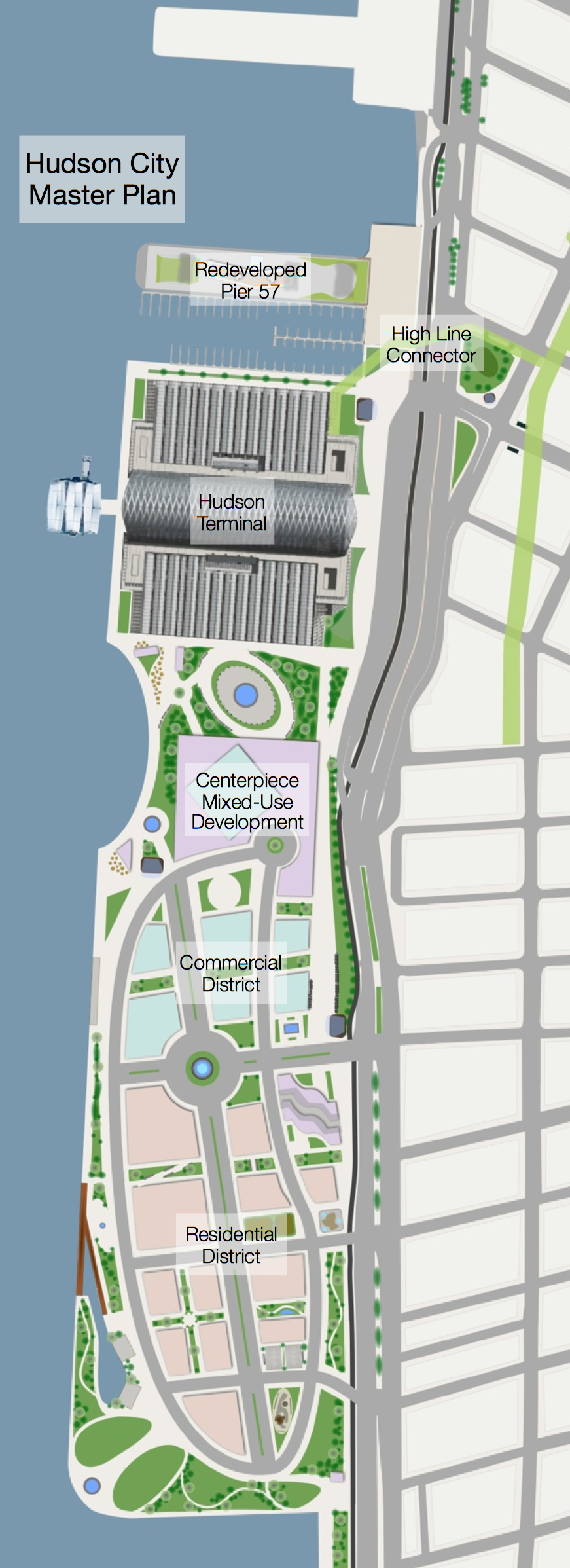Table of Contents
Download Planning for a New Northeast Corridor:

Download The Hudson Terminal Plan:

Download the Trends & Opportunities Report:

TOD and the Hudson Terminal Plan
The Hudson Terminal Plan provides significant opportunities for strategic TODs to increase ridership, drive economic development, and catalyze financing for a given segment of the overall project. From New Jersey, the four-track Hoboken Tunnel would breach the New York pierhead line in the area of Pier 45 at West 10th Street, whereabout it would curve northwards along the waterfront and branch out to 26 station tracks. In total, the feeder and station tracks from the pierhead line up to the station would stretch for approximately 13 blocks along the Hudson River. In order to secure this track infrastructure, Hudson Terminal would require the installation of a slurry wall-reinforced “bathtub” similar to the one used at the World Trade Center or the utilization of landfill similar to the land underlying Battery Park City. Either way, the construction of Hudson Terminal will result in the creation of approximately 80 acres of new land, upon which significant development could occur. Acting as a southern extension of the large-scale redevelopment already occurring on Manhattan’s West Side, this new “Hudson City” would help to catalyze the implementation of Hudson Terminal Plan through economic development and value capture mechanisms.
Like the HYRP, Hudson City would require zoning changes to allow for the construction of a mixed-use neighborhood over the Hudson Terminal infrastructure. However, unlike the HYRP, the entirety of the underlying land upon which Hudson City would be built would be government-owned. Thus, bonds used to finance Hudson Terminal’s construction could be secured and repaid by fees received through the sale of lots within Hudson City as well as the sale of additional TDRs and DIBs. In order to further capture value from Hudson City developments, the agency overseeing the implementation of the Hudson Terminal Plan could also impose special assessment taxes on new developments within the site and engage in public-private partnerships.
In total, Hudson City would encompass 8 million square-feet of new commercial space, 1.2 million square feet of new retail space, 10,000 new residences, and 25 acres of new park and public plaza space. By constructing a major transit hub on the waterfront, Hudson Terminal will be able to capture a far greater percentage of the added value from TOD than would be possible from improving transportation infrastructure within an already built-out site within Manhattan.

